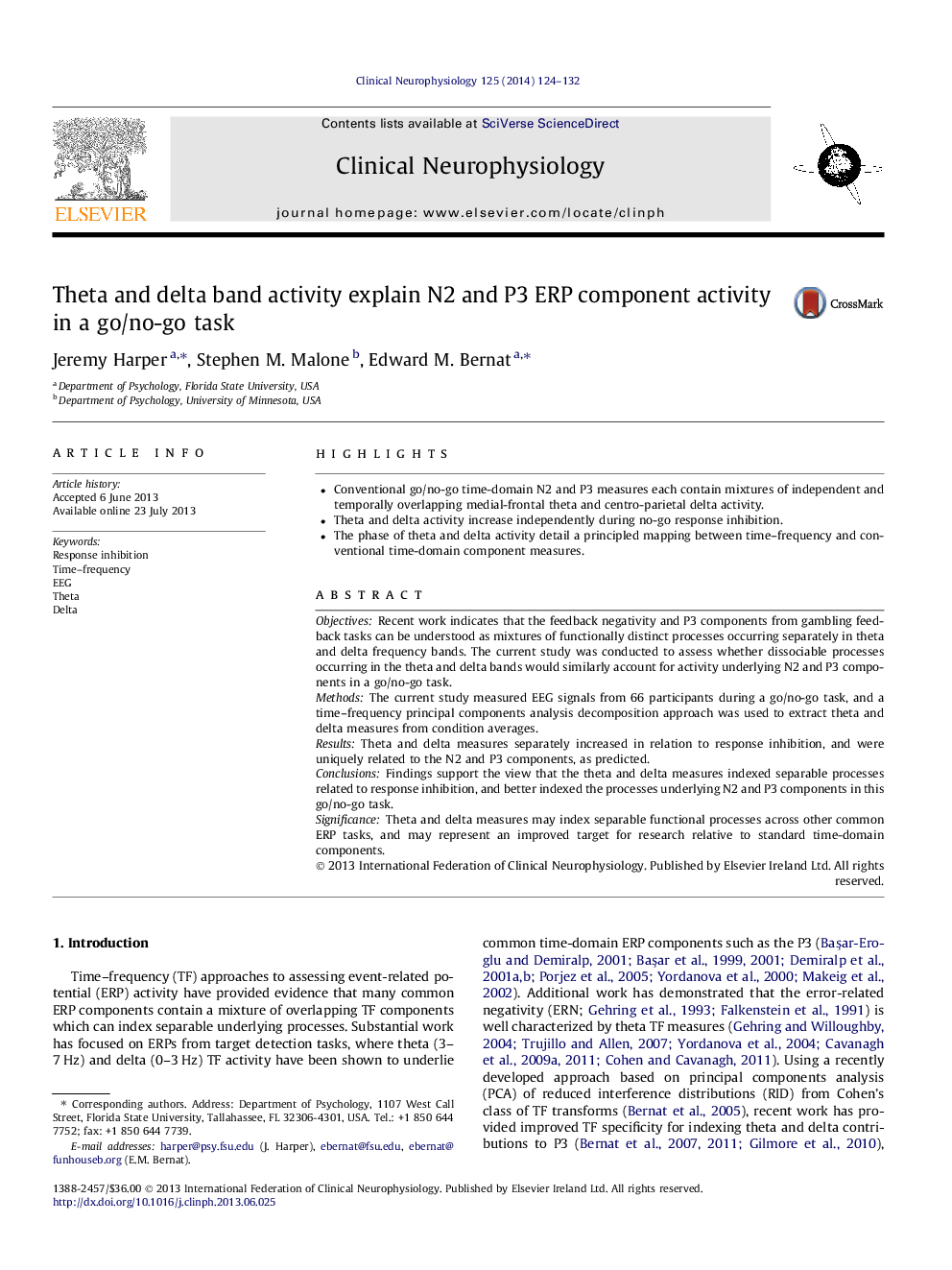| Article ID | Journal | Published Year | Pages | File Type |
|---|---|---|---|---|
| 3043640 | Clinical Neurophysiology | 2014 | 9 Pages |
•Conventional go/no-go time-domain N2 and P3 measures each contain mixtures of independent and temporally overlapping medial-frontal theta and centro-parietal delta activity.•Theta and delta activity increase independently during no-go response inhibition.•The phase of theta and delta activity detail a principled mapping between time–frequency and conventional time-domain component measures.
ObjectivesRecent work indicates that the feedback negativity and P3 components from gambling feedback tasks can be understood as mixtures of functionally distinct processes occurring separately in theta and delta frequency bands. The current study was conducted to assess whether dissociable processes occurring in the theta and delta bands would similarly account for activity underlying N2 and P3 components in a go/no-go task.MethodsThe current study measured EEG signals from 66 participants during a go/no-go task, and a time–frequency principal components analysis decomposition approach was used to extract theta and delta measures from condition averages.ResultsTheta and delta measures separately increased in relation to response inhibition, and were uniquely related to the N2 and P3 components, as predicted.ConclusionsFindings support the view that the theta and delta measures indexed separable processes related to response inhibition, and better indexed the processes underlying N2 and P3 components in this go/no-go task.SignificanceTheta and delta measures may index separable functional processes across other common ERP tasks, and may represent an improved target for research relative to standard time-domain components.
